FANTASTIC FOUR ANNUAL #2 (1964)
by Stan Lee and Jack Kirby
This is Doctor Doom’s origin story. The other story in the annual is reviewed separately.

Doom’s servant Boris leads him to a tombstone in the barren countryside; Doom is being uncharacteristically quiet and gloomy.
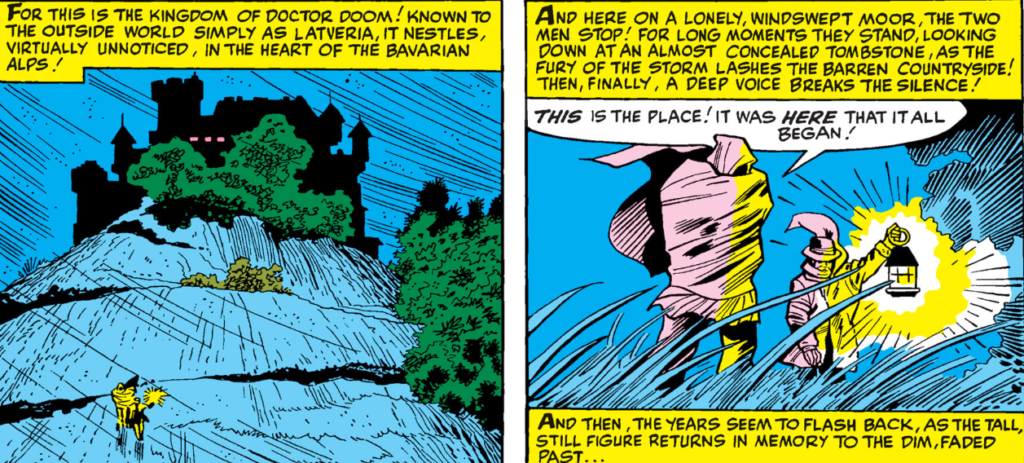
That’s when the flashback starts.
We go back to Doom’s childhood, when he was just Victor Von Doom and lived with his “gypsy tribe” with his father Werner, a “gypsy healer”.

We’re going to see the term “gypsy” thrown around a lot during this story. It’s somewhat controversial today, but at least in this comic I don’t think there were racist implications.
Werner Von Doom is brought to Latveria’s sovereign the unnamed Baron, to cure his sick wife.

The use of a baron is quite strange. Although there’s a lot of variance, in European aristocracy “baron” is a pretty low rank. It’s extremely unusual for a baron to be a sovereign of a true country (let alone in the 20th century).
Anyway, when the baron’s wife dies, he blames Werner.

Victor and Werner have to escape into the mountains, where the father does everything he can to keep his son alive.
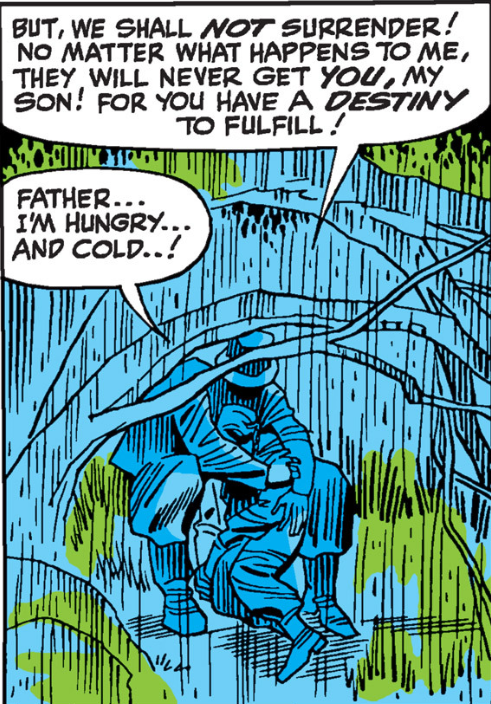
We don’t hear about Doom’s father anywhere near as often as his mother, but he’s quite a tragic figure on his own right.

Werner dies next to his son, his last words being “you must protect”.
Victor understands this to mean that his father wanted to protect him from the world, and vows the become strong.
Boris understands this to mean that the world must be protected from Victor.

Both interpretations are extremely interesting.
Boris will become Doom’s most loyal servant and his closest friend, possibly his only true friend.
One could wonder if Boris later changed his mind, or if all these years he’s been trying to subtly influence Doom. It might be both.
On Victor’s interpretation… could his promise that “none will have to protect me” be the true foundation of his “Doom needs no one” mantra?
Victor also learns that his dead mother was a witch, and inherits her treasure chest.

We jump ahead to Victor scamming rich people with his inventions.

Who could’ve guessed that Doctor Doom got his start by selling fake medicines and counterfeit statues?
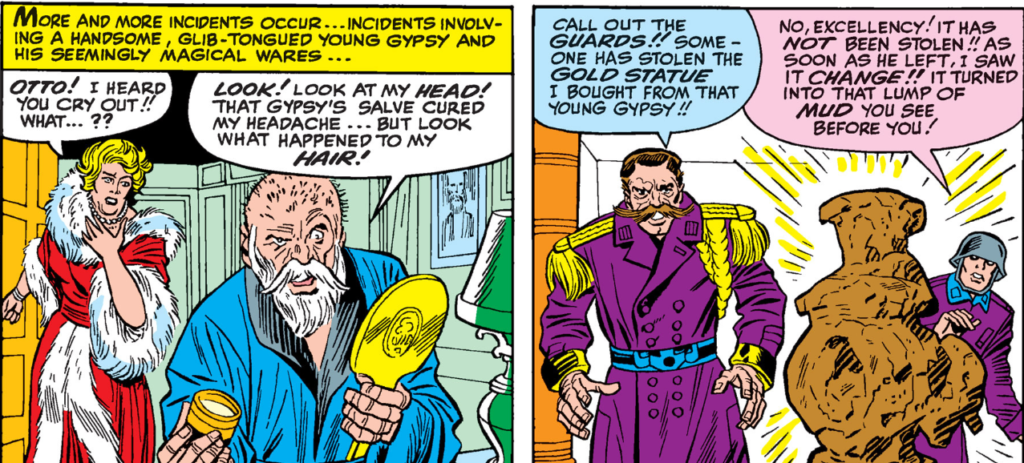
Apparently these are SERIOUS offences in Latveria, since they’re enough to warrant a firing squad! No wonder they later adapt easily to Doom’s draconian laws.
Also: first proto-Doombot!!!
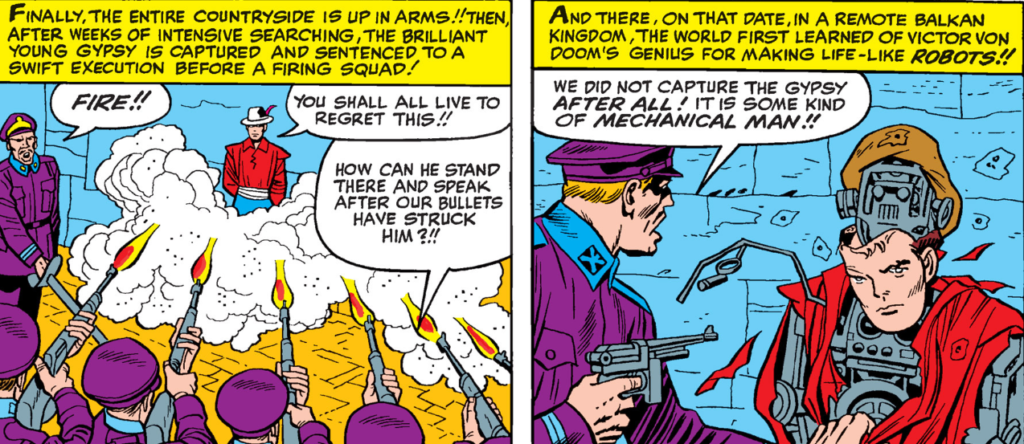
Victor’s inventions are not limited to fake merchandise: he also has freezing grenades that he uses against what I suppose is the Latverian army (they are shown to have tanks).
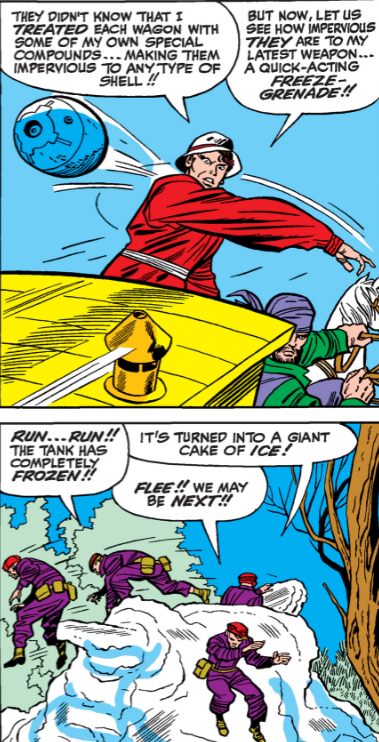
Hilariously, he was sentenced to the firing squad BEFORE freezing a tank.
Victor’s inventions attract international attention, and he’s granted a scholarship in America.
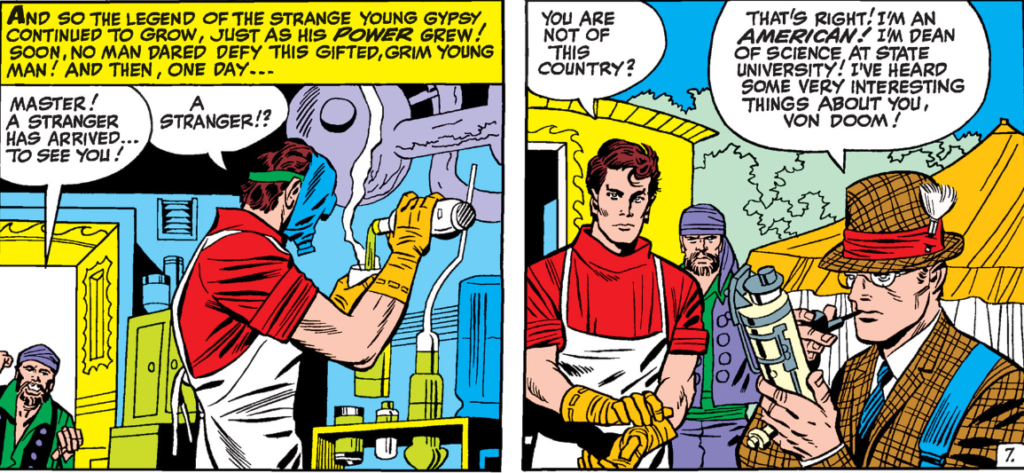
This is when Victor meets Reed Richard for the first time.
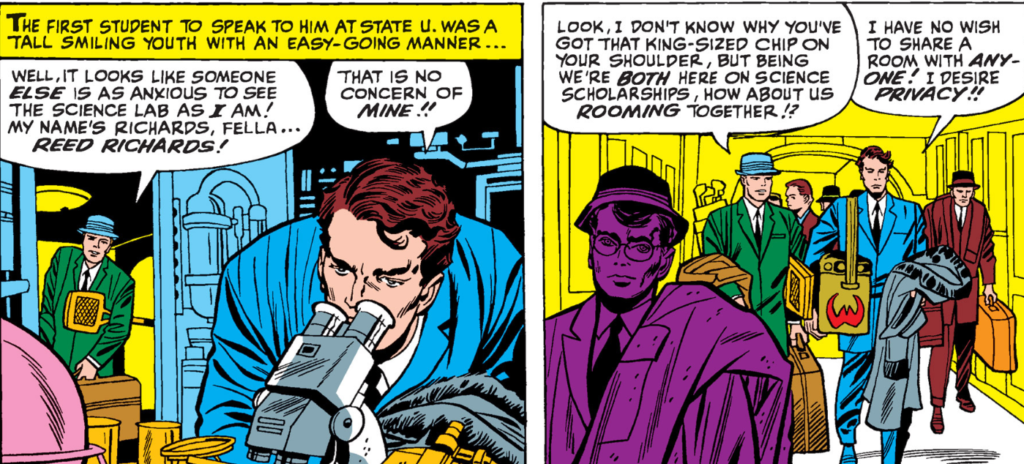
And he’s already in full mad scientist mode, something that even Reed can notice.
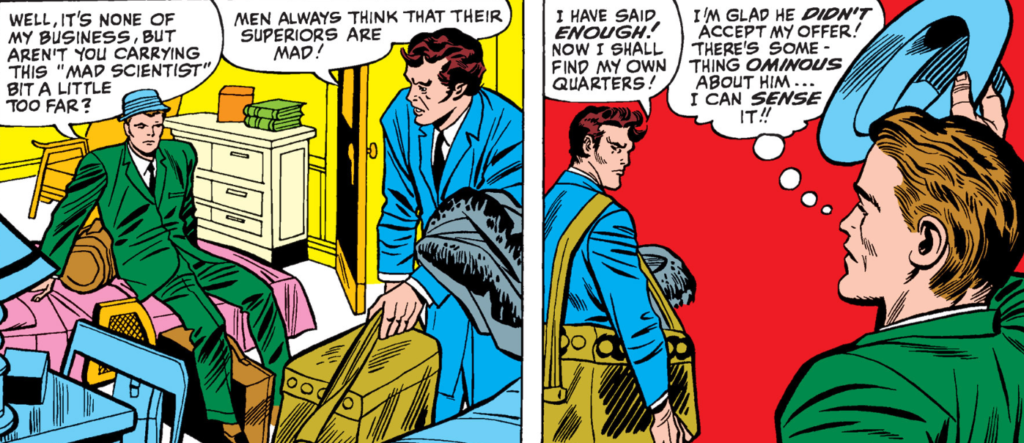
Victor manages to get a private room and starts practicing black magic.
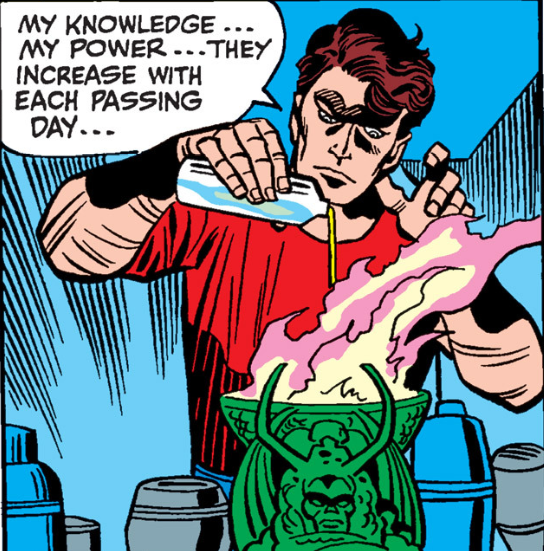
Compare the above image with what we were shown in Doom’s first appearance:

It’s clearly the same idol.
Later Victor finds Reed snooping around in his room, with Reed pointing out an error in the equations he found in his notes.
Reed is right, but that doesn’t excuse him from going through Victor’s things!
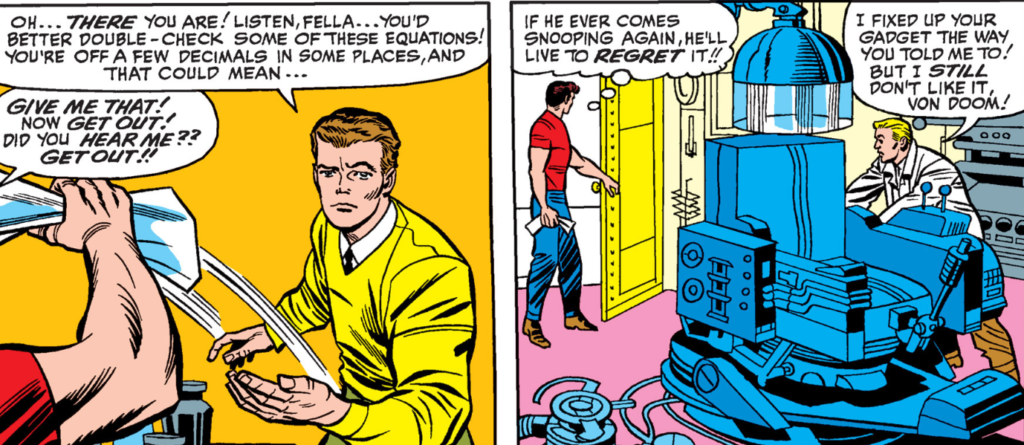
We then get a straight retelling of Doom’s experiment:
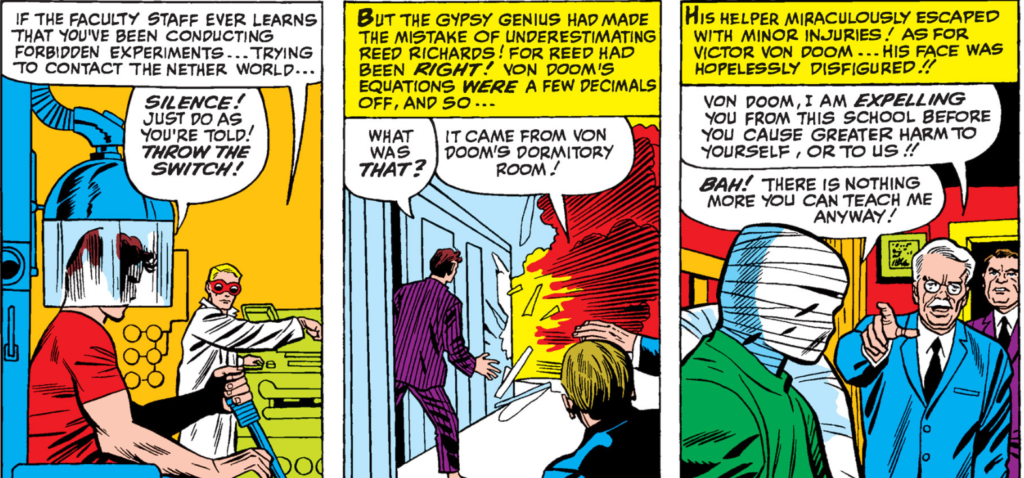
Again, compare with what we were shown in Fantastic Four #5:

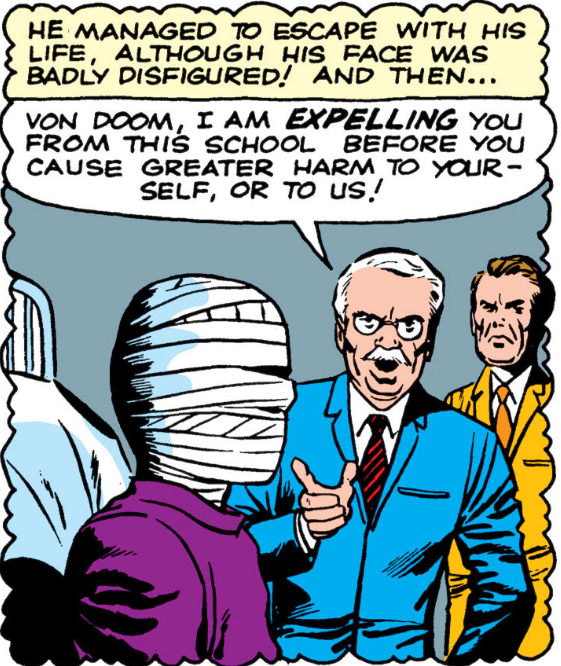
We’re also given Victor’s reaction to his new face.
Mirror smash!

This panel, and the extent of Doom’s scars, will be debated endlessly though the years.
Notice we are not shown his face. This gives credence to Jack Kirby’s version: that Doom only receives a very minor scar, and thinks his face is ruined just because it’s no longer perfect.
I don’t like that explanation: we see multiple reactions from many characters when Doom takes off his mask, and they always react like it’s the worst think they’ve ever seen.
It’s also funny that one of the first persons to see Doom’s real face and react in horror, and completely in canon, is Jack Kirby himself in Fantastic Four 10.
So Doom leaves the US and ends up in Tibet, joining a mysterious order of monks and quickly becoming their leader.
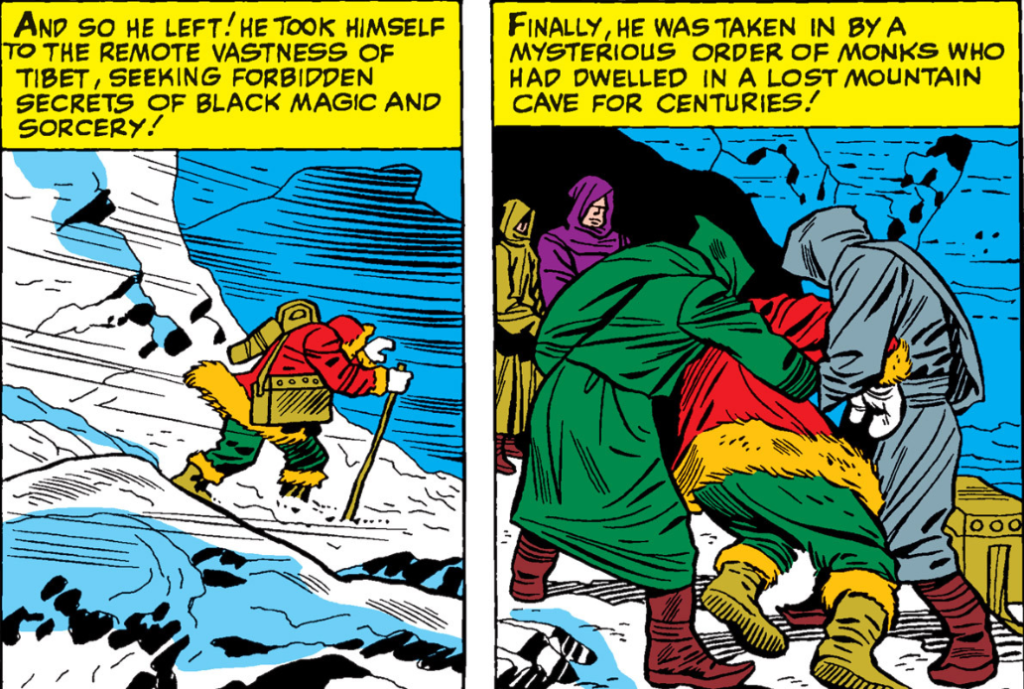
We then transition to Doom putting on his first set of armor:
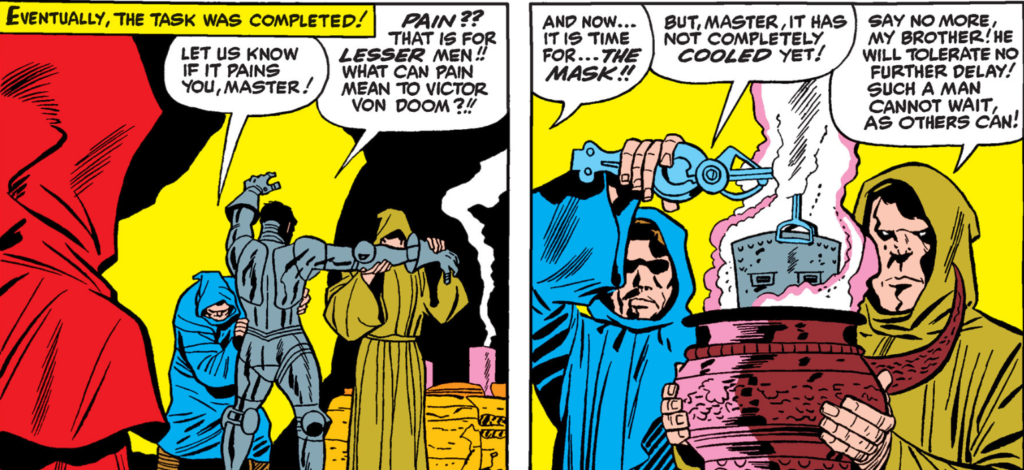
Notice the detail about the mask not being completely cooled yet.
This goes absolutely nowhere in this story, but it will be used many years later in a John Byrne retelling of the story to keep both versions of Victor’s scars… he received only a relatively minor scar in the accident, and was horrifyingly mutilated by wearing the red-hot mask.
I’m not overly fond of this retcon but it’s a reasonable compromise.
Also yes, the red-hot mask is a retcon: Doom doesn’t react in the slightest when he wears the mask.
I admit the fact that the monks don’t seem to mind what Doom looks like beneath the mask does give some credence to Kirby’s version.

The flashback ends with Doom leaving the monastery and with a show of headlines talking about Doctor Doom. I bet they’re about the time he almost caused WWIII because he wanted a job.
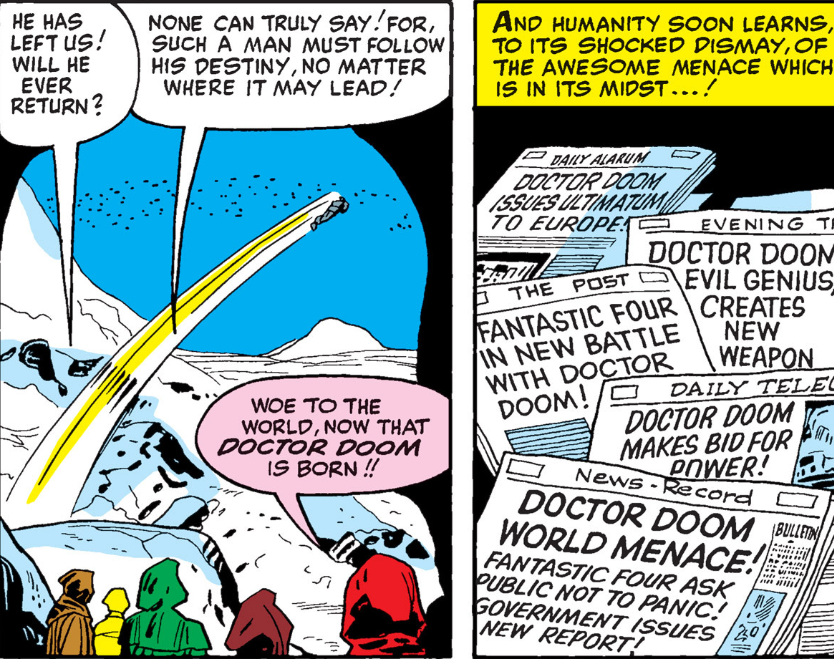
Back in the present, we see Doom make a solemn pledge on his mother’s grave, where he basically vows to become a supervillain.
Kind of like an opposite Batman.
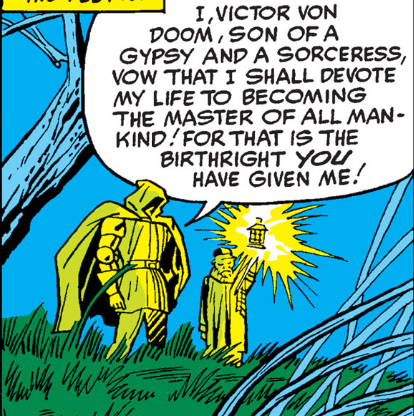
We are shown that the people of Latveria seem to genuinely love Doom.
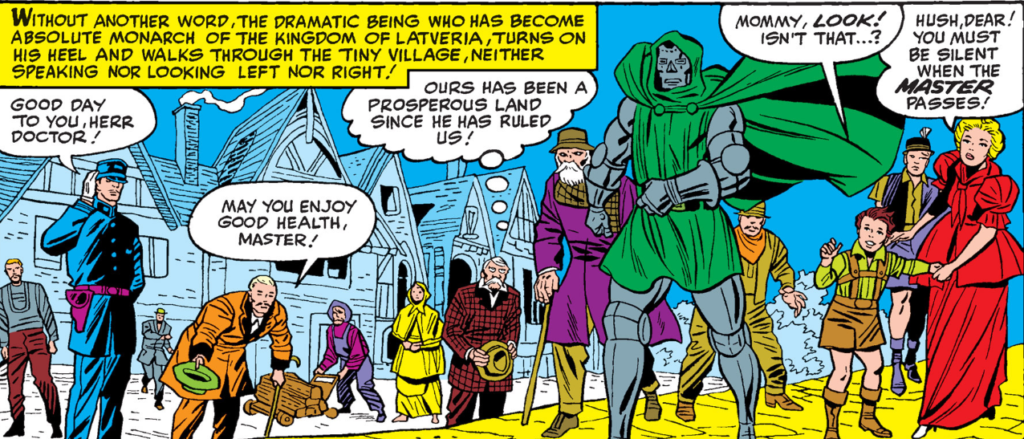
And so we end with Doom returning to his castle to unleash who knows what untold menace.
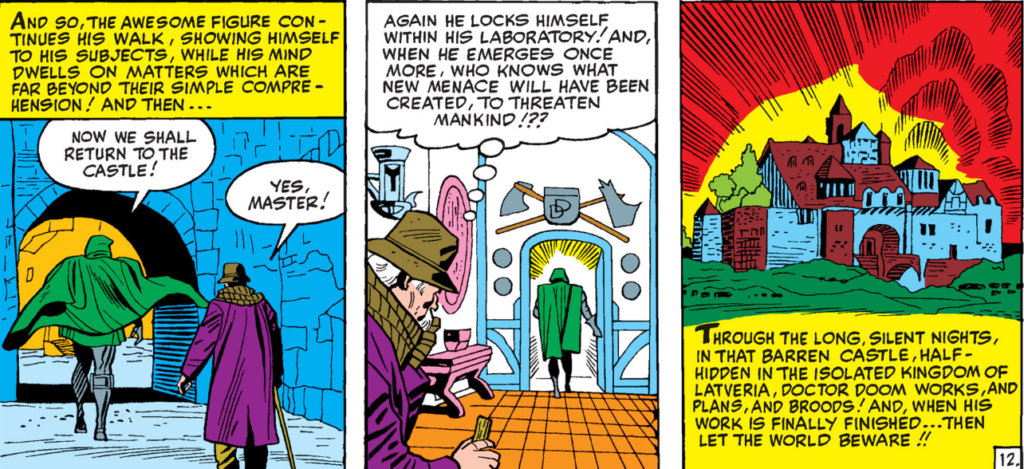
Doom significance: 10/10
The introduction of Boris and of Doom’s parents would be enough. We won’t see much of his father over the years, but his mother has more appereances than you’d expect.
Of course this is the second time Doom is given an origin, but it’s far more complex than the single pace he received in his first appearance.
Silver Age-ness: 1/10
There’s some minor sillyness with his earliest inventions, but it’s a nice break from the very serious rest of the origin and it’s barely noticeable.
Does it stand the test of time? 10/10
This is as good as it gets for Doom in this era. The story makes a great job at making him a tragic and complex figure, while at the same time making no attempt to show him as a good guy in any sense. The narration has a serious and somber tone, and even Doom is less histrionic than usual.
Doom’s origin will be expanded over the years; if we go by this story alone, Victor and Reed barely interacted in college, and Von Doom might not even know he bumped into Ben Grimm.
The most important retellings are the graphic novel “Triumph and torment” and the excellent miniseries “Books of Doom” by Ed Brubaker; both are HIGHLY recommended.
Every part of this story is included in some way in every retelling, with the glaring exception of Victor’s shenanigans with selling fake inventions to rich people.
It was a Doombot all along
The first one. Doom and robots go waaaay back.
Crazy tech
Doom’s scams are not particularly impressive, but his freezing grenades and his robot duplicate are already more advanced than what’s used by some supervillains as their main weapon.
It’s not explored much here, but by far his most impressive invention seen here is the one that blows up in his face. Sure, it doesn’t work… this time… but the guy built a machine to send him to the afterlife while he was still in college!
Mirror smash!
The original one. Note that Doom is the only one that we see reacting to Doom’s face throughout the entire story.
The doomy land of doom
Latveria is said to be “in the Bavian alps”. This would make Latveria share a border with Germany and place it somewhere around Austria or Liechtenstein. It’ll eventually end up somewhere else entirely. Also, first representation of the people of Latveria adoring Doom.

On the use of the title “baron”: I suspect most Americans–and certainly most comic book readers in the 1960s–did not know the distinctions among aristocratic tiles. Most of the original audience for this story would likely have associated the term with Snoopy’s nefarious enemy, The Red Baron.